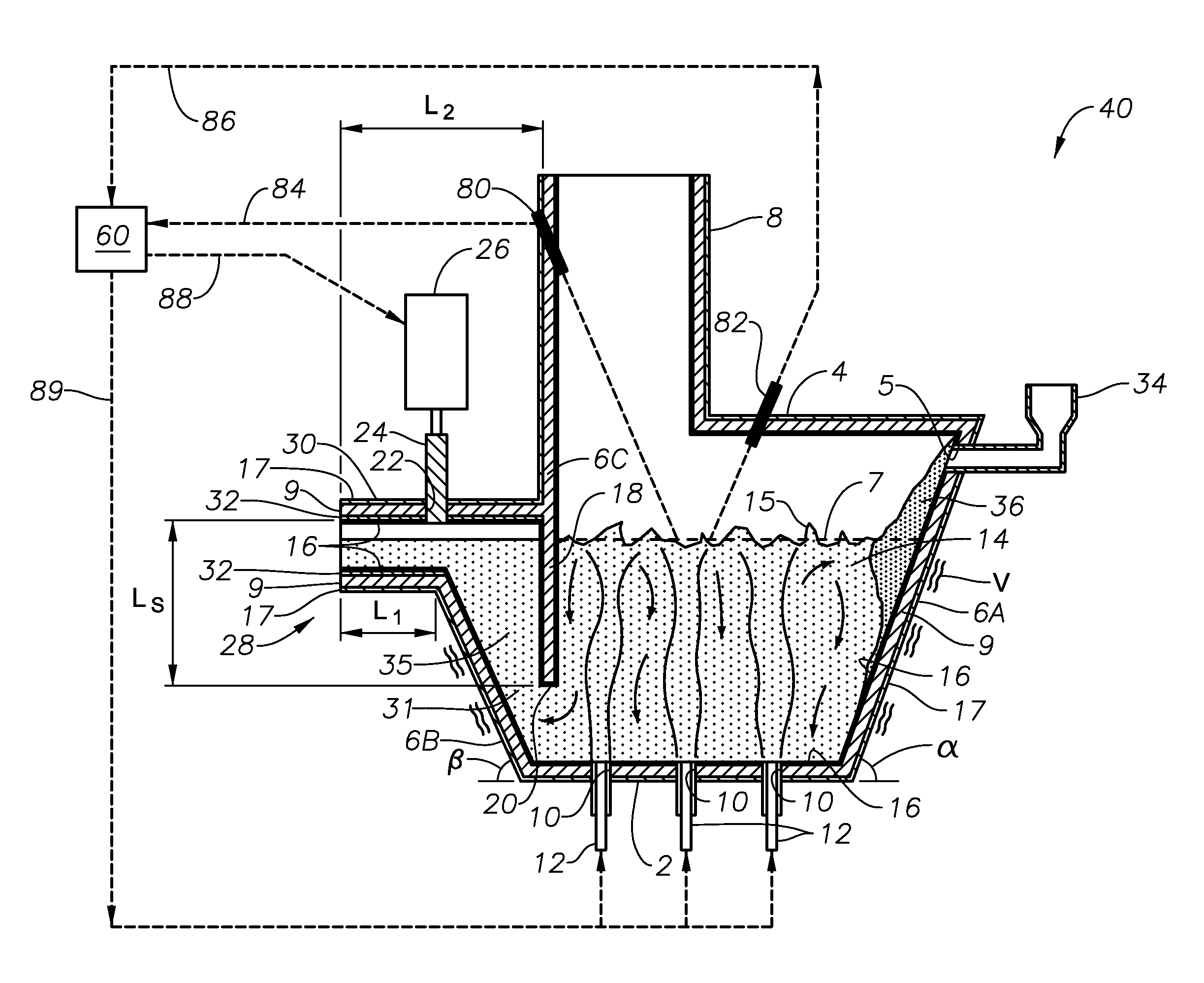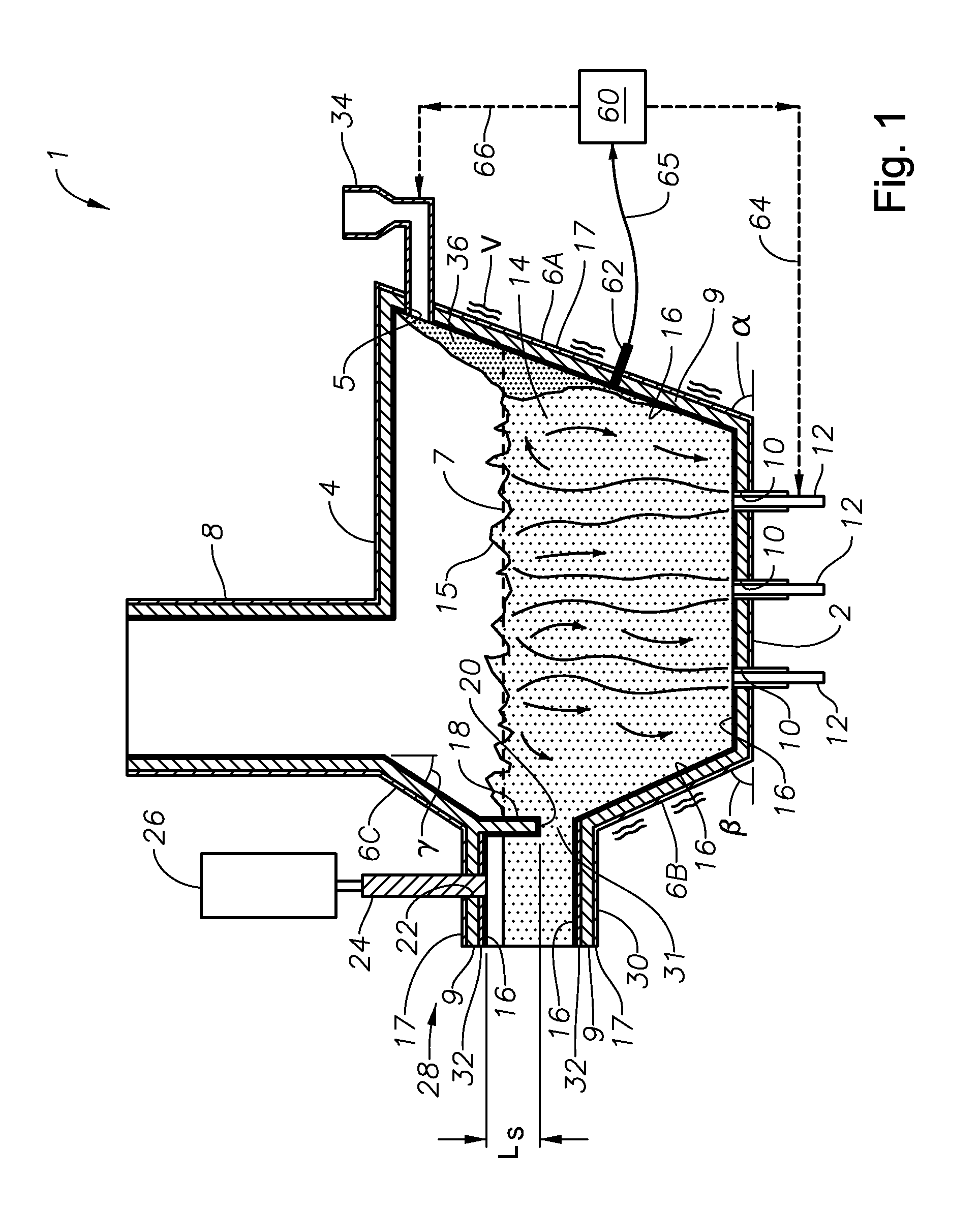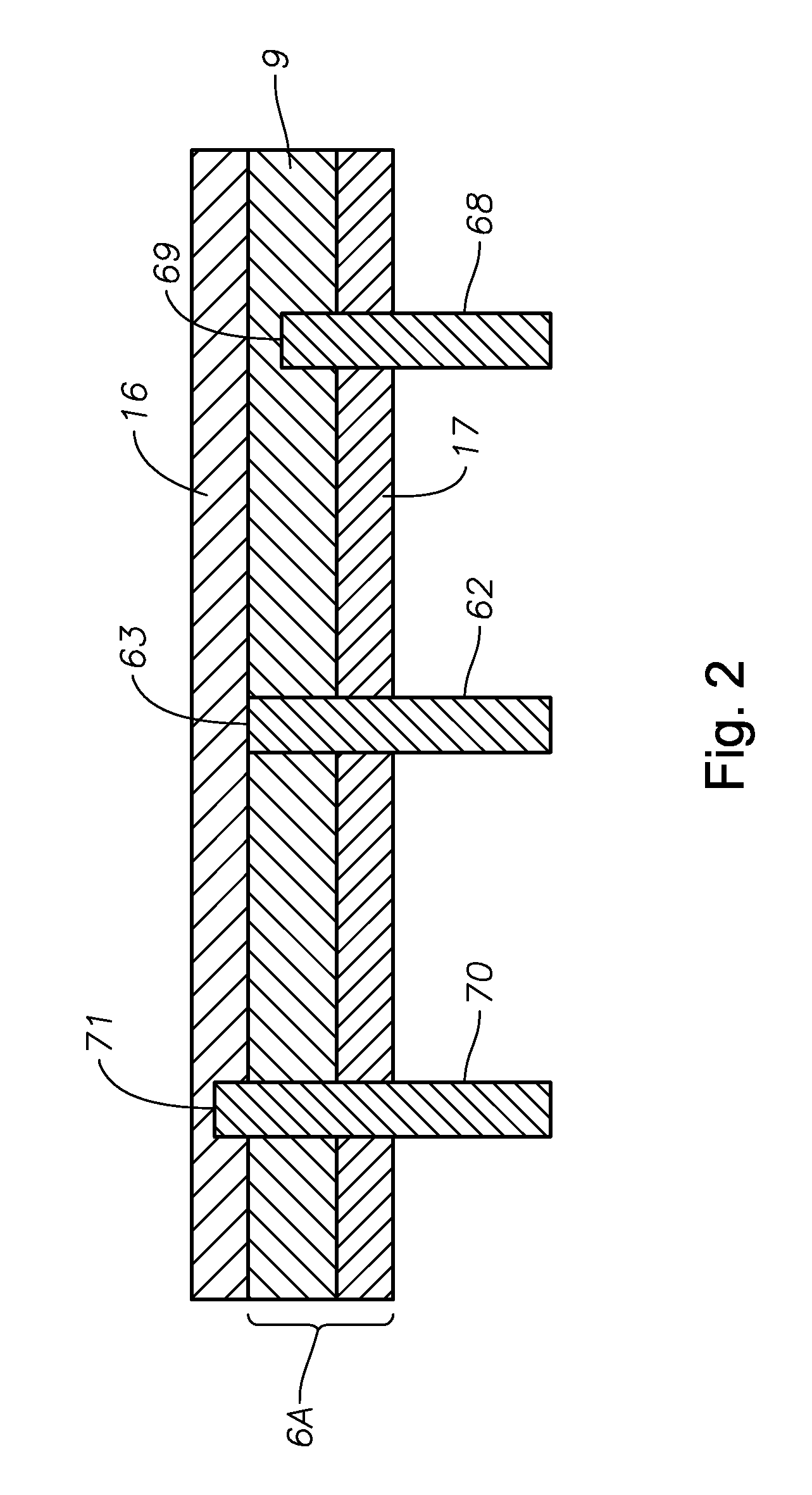Submerged combustion melting processes for producing glass and similar materials, and systems for carrying out such processes
a technology of glass and similar materials, applied in the field of submerged combustion melters, can solve the problems of violent turbulence of molten materials, difficult monitoring, and inability to use melter control signals from these sensors, and achieve the effect of reducing or eliminating the problems associated with the molten material
- Summary
- Abstract
- Description
- Claims
- Application Information
AI Technical Summary
Benefits of technology
Problems solved by technology
Method used
Image
Examples
embodiment 1
[0052]System embodiment 1 further includes an exhaust stack 8, and openings 10 for floor-mounted submerged combustion burners 12, which create during operation a highly turbulent melt indicated at 14. In certain embodiments, burners 12 are positioned to emit combustion products into molten glass in the melting zone 14 in a fashion so that the gases penetrate the melt generally perpendicularly to floor 2. In other embodiments, one or more burners 12 may emit combustion products into the melt at an angle to floor 2, where the angle may be more or less than 45 degrees, but in certain embodiments may be 30 degrees, or 40 degrees, or 50 degrees, or 60 degrees, or 70 degrees, or 80 degrees.
[0053]The initial raw material can be introduced into the melter of system 1 on a batch, semi-continuous or continuous basis. In some embodiments, a port 5 is arranged at end 6A of the melter through which the initial raw material is introduced by a feeder 34. In some embodiments a “batch blanket”36 may...
embodiment 250
[0068]Still referring to FIG. 11, the conditioning channel of embodiment 250 may include several sections, for example a second section 122, third section 124, fourth section 126, and fifth section 128 arranged in series, each section having a roof, floor, and sidewall structure connecting its roof and floor, and defining a flow channel for conditioning molten glass flowing therethrough. Sections 122, 124, 126, and 128 may be divided by a series of skimmers, first skimmer 133, second skimmer 135, third skimmer 137, and fourth skimmer 139, each extending generally substantially vertically downward a portion of a distance between the roof and floor of the channel, with a final skimmer 141 positioned between fifth channel section 128 and a forehearth 149. The number of sections and the number of skimmers may each be more or less than five. Forehearth 149 may have one or more forming outlets denoted by dashed boxes 151, 153, on its underneath side, such as bushings, gob cutters, and the...
embodiment 100
[0077]FIGS. 3, 5, 8, 10, 12, 14, and 15 are logic diagrams illustrating processes in accordance with the present disclosure, with FIG. 3 illustrating logically a general process, and FIGS. 5, 8, 10, 12, 14, and 15 corresponding to the system embodiments illustrated schematically in FIGS. 1, 4, 6, 9, 11, and 13, respectively. It should be emphasized that all steps of the various process embodiments need not be carried out in series or succession. Embodiment 100 of FIG. 3 includes the steps of feeding at least one partially or wholly vitrifiable material into a feed inlet of a melting zone of a melter vessel comprising a floor, a ceiling, and a wall connecting the floor and ceiling at a perimeter of the floor and ceiling, the melter vessel comprising a feed opening in the wall or ceiling and an exit end comprising a melter exit structure for discharging molten material formed in the melting zone, the melter vessel comprising at least one fluid-cooled refractory panel in its floor, cei...
PUM
| Property | Measurement | Unit |
|---|---|---|
| angle | aaaaa | aaaaa |
| angle | aaaaa | aaaaa |
| angle | aaaaa | aaaaa |
Abstract
Description
Claims
Application Information
 Login to View More
Login to View More - R&D
- Intellectual Property
- Life Sciences
- Materials
- Tech Scout
- Unparalleled Data Quality
- Higher Quality Content
- 60% Fewer Hallucinations
Browse by: Latest US Patents, China's latest patents, Technical Efficacy Thesaurus, Application Domain, Technology Topic, Popular Technical Reports.
© 2025 PatSnap. All rights reserved.Legal|Privacy policy|Modern Slavery Act Transparency Statement|Sitemap|About US| Contact US: help@patsnap.com



